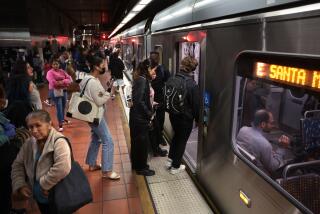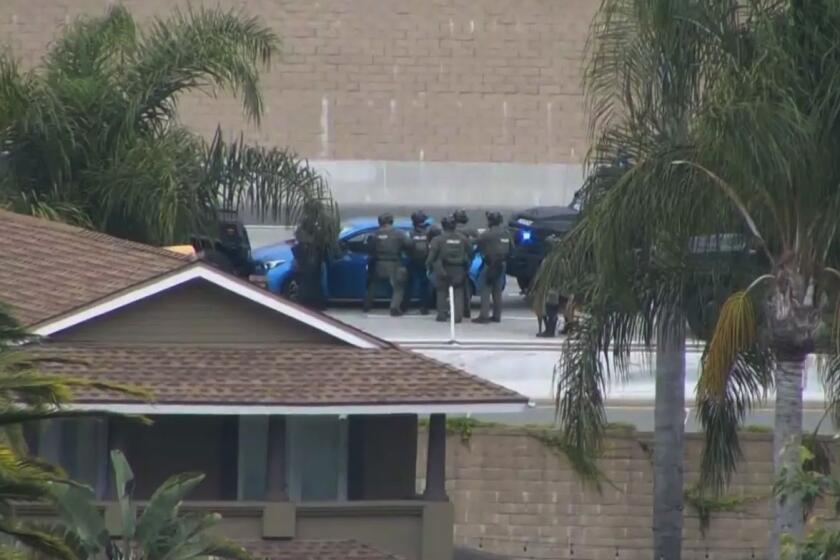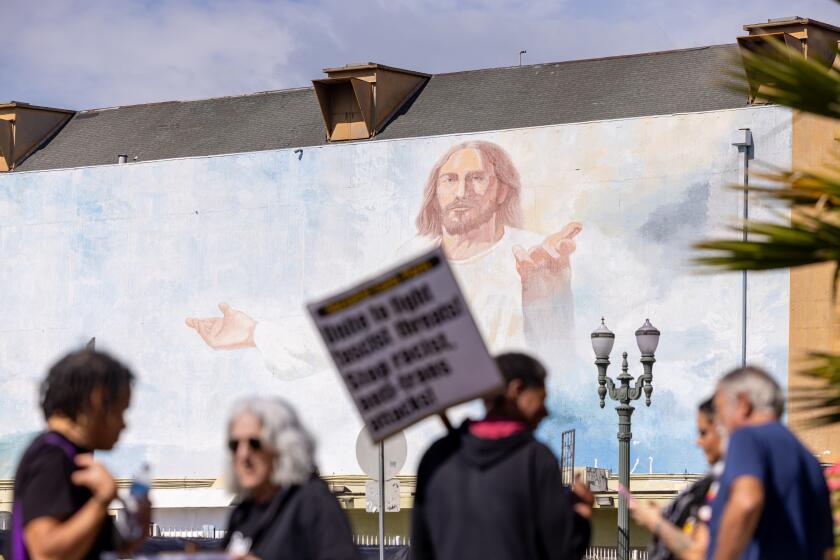Lucas Expects More Speed in Deciding Capital Cases
Chief Justice Malcolm M. Lucas said Sunday that the California Supreme Court is “making progress” in reducing its heavy death penalty backlog and that capital cases may be decided even more rapidly in the future.
“Although these cases will never be easy, we hope that in the future each case will take less time to decide, because many of the difficult issues have been resolved,” he told the annual meeting of the State Bar of California.
Since Lucas became chief justice last year, the court has concentrated heavily on its capital backlog, issuing 54 decisions--40 of which upheld death verdicts.
In the last 12 months alone, 52 capital decisions have been filed--compared to 18 and 15, respectively, in the two previous one-year periods under former Chief Justice Rose Elizabeth Bird.
In the process, the Lucas court has decided several far-ranging issues affecting dozens of other capital cases. In one such ruling, for example, the court held last October that a defendant in a felony murder can be sentenced to death without a jury finding of intent to kill.
The court’s rapid pace in death penalty cases has attracted criticism from some defense attorneys and legal commentators, who contend the justices are acting too hastily in affirming death verdicts.
In his speech, Lucas acknowledged that while there are still more than 180 capital cases pending before the court--representing nearly half its total docket--there now are only 39 cases in which all briefs have been filed and the case is ready for oral argument.
“I can confidently say that we are making progress in dealing with those cases which are ready for our consideration,” he said.
Reducing the Time
Lucas also expressed hope that the court’s newly adopted deadlines for issuing all decisions--civil and criminal--will reduce the overall time cases are before the justices.
The chief justice, discussing details of the new process that was announced last week, refused to flatly predict success. But he did say there is a “real possibility” that cases will proceed faster through a system heretofore plagued with backlog.
Under the new system, exceptions can be made in a number of cases--such as those that might be affected by pending U.S. Supreme Court decisions--but Lucas noted, jokingly, that such exceptions would be made only, for example, in the “event of bubonic plague.”
The chief justice, touching on a range of issues in his annual State of the Judiciary address, reported also that case backlogs in several counties are starting to wane under the state’s new trial court delay reduction program.
In Los Angeles Superior Court, he noted, in the first three months of this year, 24,225 cases were disposed of, while 20,744 were being filed by litigants. Other counties also reported to have made similar gains, he said.
Shift in Policy
Lucas devoted a substantial part of his address to the major policy shift in which the court, starting in January, will begin to issue rulings within 90 days after a case has been argued before the justices.
Under the state Constitution, courts are required to decide cases within 90 days after they are submitted or lose their salaries. But for more than 30 years, the state Supreme Court has sidestepped the deadline by determining that a case was not “submitted” until it was virtually ready for a decision.
The court’s decision to adhere to the 90-day deadline had drawn expressions of concern from some commentators who feared it would diminish the role of oral argument and undermine the quality of the court’s opinions, particularly in complex and far-reaching cases.
In his speech, however, Lucas said that under the new system, the justices would do more work on a case before it was argued by attorneys, thus streamlining the overall decision-making process.
A closed, pre-argument conference will be held to discuss issues in a case and any differences among the justices, he said.
Devoting More Time
Thus, he said, each justice will have “an even greater in-depth grasp” and “will have devoted more time” to a case before argument.
Under the current system, briefs and other documents in an individual case are circulated among the justices, one by one, in sequential order, largely for closing group discussions before oral argument.
Now, Lucas said, there will be “simultaneous consideration” before argument, with issues and differences being clarified earlier in the process.
“We do not expect that our new procedures will diminish the role of oral argument,” he told the Bar members. “Our pre-argument positions will be tentative and subject to change after counsel make their oral presentations.”
“I will not predict whether this new approach will ultimately shorten the overall time from the date review is granted until a case is disposed of, but I believe there is a real possibility it may do so,” he said.
Other Viewpoints
In interviews Sunday, other court members appeared cautiously optimistic that the new system would shorten the time between the granting of a review and a decision--a process that now can take a year or more in more complex cases.
“Under the new process, we will be working concurrently . . . not sequentially on a case,” said Justice Allen E. Broussard. “I think this is going to reduce the amount of time it takes for a case to go through the system.”
Justice Marcus M. Kaufman said he is “hopeful” the new procedure will “improve the production of the court and also the quality of the opinions.”
Kaufman acknowledged there would be added pressure to decide cases relatively quickly after argument. “We’re just going to have to do it,” he said.
Justice John A. Arguelles said he expects the new procedure to be “more efficient,” while not diminishing the role of oral argument. “But only time will tell whether it will reduce the length of time a case is before the court,” he said.
More to Read
Start your day right
Sign up for Essential California for news, features and recommendations from the L.A. Times and beyond in your inbox six days a week.
You may occasionally receive promotional content from the Los Angeles Times.






